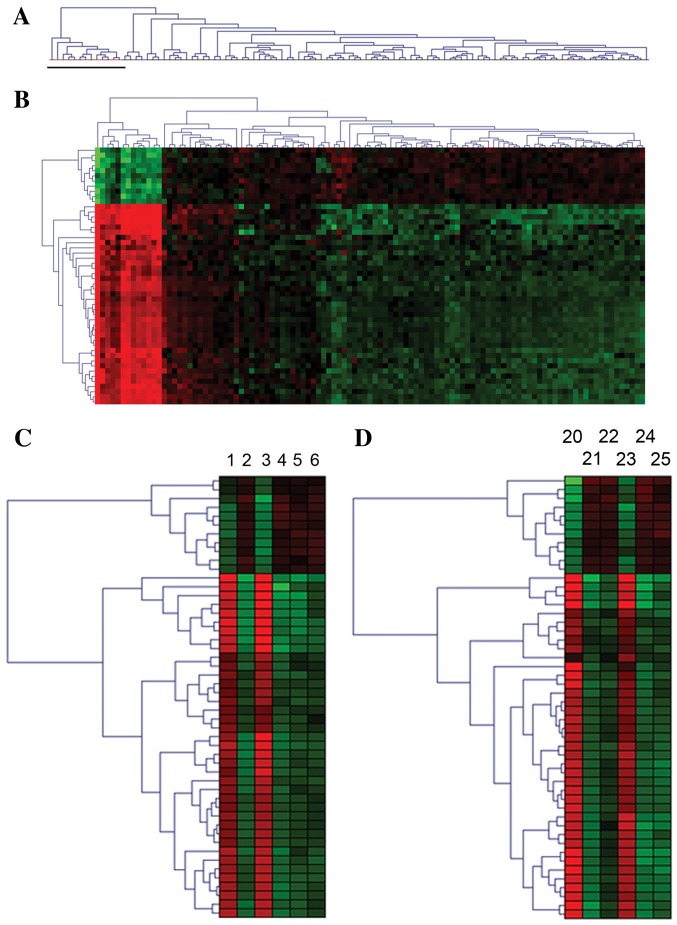Figure 1.
A distinct and reversible gene expression pattern was identified in preterm infants undergoing continuous oxygen therapy during transient hypoxia. (A) Dendrogram of unsupervised clustering of all expression data identified a homogenous expression pattern in 13 blood samples, as indicated by a black bar, from seven preterm infants on long-term continuous oxygen therapy exhibiting hypoxia. (B) Hierarchical cluster analyses of the 50 most differentially expressed genes (P<0.05) at the time of hypoxia when continuous oxygen therapy was administered compared to when the infants did not receive continuous oxygen and had no events of hypoxia. The red area represents highly upregulated genes and the green area represents downregulated genes. The darker shades represent genes with smaller changes in gene expression. (C) Example 1 illustrates the reversible nature of the transcription profile: Transient gene expression profile of differentially expressed genes in a preterm infant born at 25.2 weeks gestation during transient hypoxia and reoxygenation with 100% FiO2 on the 17th and 23rd day after birth, as represented by the sample ID nos. 1 and 3. At the other time points, the infant was stable without hypoxia and continuous oxygen therapy. (D) Example 2 illustrates the reversible nature of the transcription profile: Transient gene expression profile of differentially expressed genes in a preterm infant born at 28.1 weeks gestation during transient hypoxia and reoxygenation with 100% FiO2 on the 5 and 25th day after birth, as represented by the sample ID nos. 20 and 23. At the other time points, the infant was stable without hypoxia and continuous oxygen therapy.

